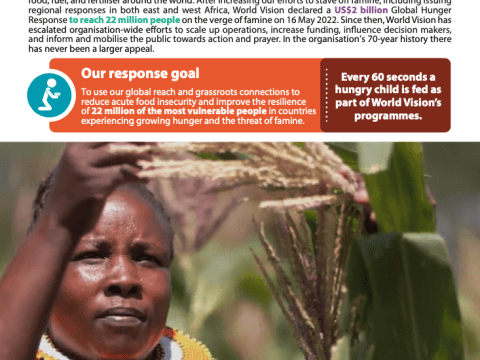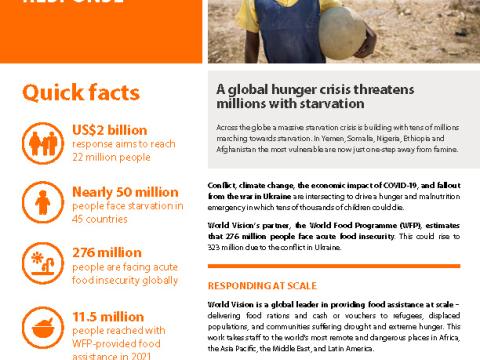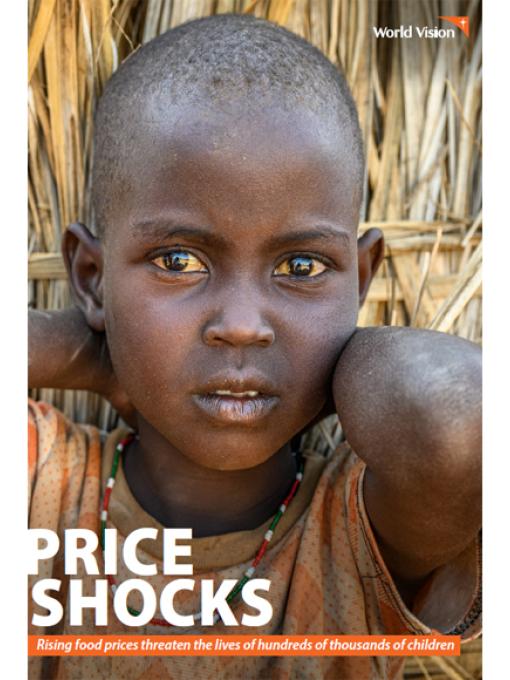Global Hunger Response - Capacity Statement
Download
The world is facing a massive hunger crisis. Tens of millions of children and their families are confronted with starvation. Conflict, COVID-19, climate change, and rising costs are the drivers of this crisis, exacerbated by the war in Ukraine which has resulted in global inflation, price spikes, and shortages in food, fuel, and fertiliser around the world. After increasing our efforts to stave off famine, including issuing regional responses in both east and west Africa, World Vision declared a US$2 billion Global Hunger Response to reach 22 million people on the verge of famine on 16 May 2022. Since then, World Vision has escalated organisation-wide efforts to increase operations, increase funding, influence decision-makers, and inform and mobilise the public towards action and prayer. In the organisation’s 70-year history there has never been a larger appeal.
We know that rising costs and crisis levels of hunger come with other complex issues. This is why, as a global leader in providing food assistance; nutrition; water, sanitation, and hygiene (WASH); child protection; and livelihoods programming at scale as well as rapid and prolonged emergency assistance to refugees, displaced populations, and communities suffering extreme climate conditions and hunger;
World Vision is scaling up our work around the world in order to:
• respond directly to hunger and price shocks with the provision of emergency food
• improve access to food for affected households
• provide clean water
• ensure access to nutrition and health services
• keep the most vulnerable safe
• improve household resilience to food insecurity and livelihood-related shocks.



